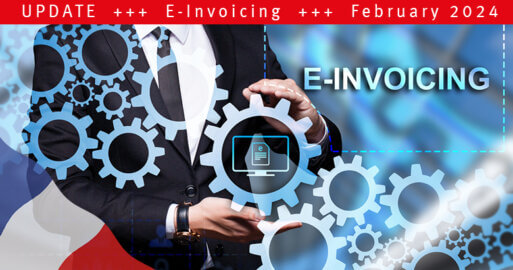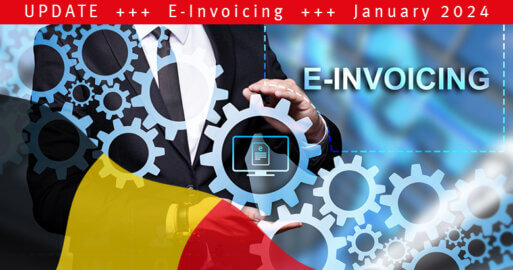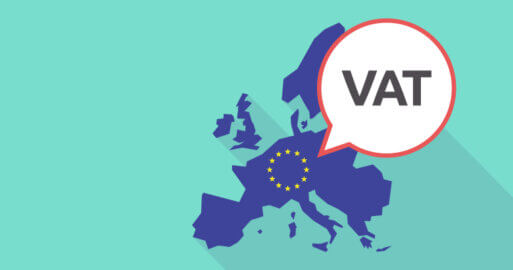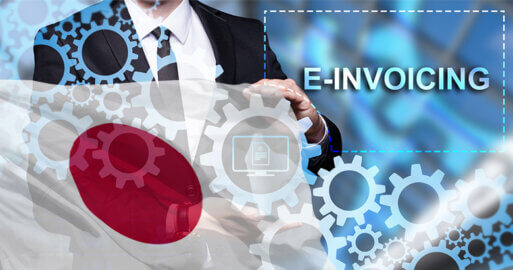Where are the stumbling blocks when introducing e-invoicing?

From 27/11/2020, any business supplying public authorities is legally required to send electronic invoices. At the moment, we are noticing a (definitely wanted) ripple effect from this: billers are not only sending e-invoices in those business relationships which legally stipulate this. They are increasingly and voluntarily striving to send e-invoices in their other business relationships, too! By all appearances, the experience they have since gained with e-invoicing – although originaly driven by the need to follow legisation – has delivered on the cost and time savings it promised. Now that’s a wake-up call for homo economicus!
This means that e-invoicing is transforming from a function purely introduced to comply with annoying legislation to a ʽmust haveʼ for profit-orientated companies. Furthermore, whoever is now considering introducing e-invoicing has the enormous advantage that it’s no longer completely new territory.
Introducing e-invoicing: The time for change is now!
An electronic invoice is an invoice which is issued, transmitted and received in an electronic format. This could be via e-mail, DE-Mail, E-Post, computer fax, a fax server, download, or a web-based service. Specialist service providers, who have been intensively supporting companies to switch to e-invoicing over the past years, have since learned a lot. This is reflected in ever shorter implementation periods with an ever decreasing implementation workload. Often, it’s not easy to determine when the time has come for a fundamental change to be made. However, for e-invoicing, the best time is now: The teething problems have been dealt with. Launch costs have significantly reduced and the headstart enjoyed by the early adopters can still be made up.
So that the switch to e-invoicing goes as smoothly as possible, in this article we’ll draw your attention to potential stumbling blocks, while also showing you strategies to overcome and soften these.
Do a needs analysis for all your stakeholders before introducing e-invoicing
In the past, many companies – quite understandably – tended to focus on merely complying with any new legislation. Therefore, as a rule, only a basic version of an e-invoice was put in place. This meant that maybe only the fields absolutely necessary for a valid X-Rechnung were sent, ignoring useful yet optional elements such as reference numbers or cost center information. The result was that automated processing was either very difficult or even impossible for the recipient. Contacting the sender for further information or to ask them to change their processes going forward meant that any original time, cost or efficiency savings were negated by the ‘little queries’ that needed to be made.
But it doesn’t have to be like this! Working out what all stakeholders need before and at the beginning of your implementation project costs a lot less than all the ‘little queries’ you’ll be making if you don’t. Taking into account the core needs of all parties involved in the electronic invoicing process often only creates a small amount of additional work during implementation, which is usually more than compensated for by the absence of queries and clarifying further down the line.
How to choose the right provider and product for e-invoicing
Many solution providers are now able to offer simple conversion into the target format you require. However, focussing on this aspect alone doesn’t go far enough.
It is worth considering the following issues when working out what your own e-invoicing solution needs to look like. Use the list below to evaluate your own needs in a structured way, which will lead to a checklist when finally choosing a product:
- Standardised or customised solution?
- Cloud or in-house?
- Scalability?
- Necessary / desired depth of integration in your ERP system
- Licence, running and setup costs (ROI calculation)
- Additional services: How about portal solutions with modern incoming and outgoing ledgers? Integrated archiving?
- What ongoing level of support will you require? What is the procedure if you need new, different e-invoice formats after the system has gone live?
The list of requirements can quickly grow longer than originally expected. As there will probably not be that many products which would be able to fulfill all the points on your wishlist, it is worth prioritising your requirements. What features are deal breakers? What restrictions could you live with? It’s crucial you choose your provider carefully. Changing to a new system once implementation has begun is generaly very difficult and correspondingly expensive.
Ensure your e-invoices will be sent securely and are fully traceable
As well as the purely functional expectations you have of an e-invoicing solution, you also need to consider how the communication channel beween the invoice issuer and recipient is set up. Important factors here are security and traceability.
These days, electronic invoices are (still) mostly sent by e-mail. Only a handful are sent by De-Mail or over direct web services. A channel growing in importance is the Peppol network. Although paper-based invoices are almost always sent as normal post, i.e. non-recorded delivery, the sender of an e-invoice expects to receive confirmation that the e-invoice has been delivered successfully to the recipient. This makes it all the more surprising that finding a secure communication channel is usually given so little attention: a number of invoices are still being sent as basic e-mails, unencrypted and with no digital signature.
Experienced providers have the right tools in their kit to not only meet their customers‘ expectations on function, but also to be able to provide an extremely high level of transmission security. It is also highly probable that the Peppol network will play a major role in this area.
Introducing e-invoicing: The project
Once you have worked out what functions you need and found a suitable product, you can start implementing e-invoicing. In order to ensure the project runs as efficiently as possible, in most cases it is worth leaning on the expertise of outside project management. Comprehensive knowledge and experience of the particularities in implementing an e-invoicing solution help to avoid major mistakes and ensure lean implementation in terms of time, budget and quality.
As well as a detailed project plan and selecting suitable employees, you need to consider the following elements:
- Does everyone have the same understanding of the project?
- Is it clear what is being done in-house and what is being done by a third party?
- Plan a series of regular meetings to coordinate project progress and any current issues.
- How will this project be (inter) dependent on parallel projects/ activities?
- Format mapping – do the intensive planning work in advance, ensure that initial documentation is tidy, and keep on updating as required.
- Plan enough time for testing; this often requires several iterations.
- Leave enough time for signing off on the project; this often takes more time than you think.
Conclusion: Do it right from the start
Planning, preparation and taking a structured approach to your project are essential for all involved. As in so many situations, the old quality adage works here, too: Do it right the first time! From the needs analysis via choosing your product and provider to carrying out your implementation project, we, econtea, can help you avoid the stumbling blocks. With tried and tested methods, procedural models, specific checklists, decision matrixes and project templates, we can take your hand as your digitalisation partner and e-invoicing expert. Contact us: We’d love to hear from you.
Download econtea’s comprehensive guide to choosing, implementing and commissioning an e-invoicing solution (german only).
Thank you for your message
We appreciate your interest in SEEBURGER
Get in contact with us:
Please enter details about your project in the message section so we can direct your inquiry to the right consultant.
Written by: Uwe Onnen
Uwe Onnen, Senior Consultant, Business Unit Utilities is the technical contact for the topic of e-invoicing and also supports the ZUGFeRD working group at EDNA on the ZUGFeRD format definition for the energy industry. Mr. Onnen has been providing professional and technical advice to the energy industry for over 10 years. As a project manager, he regularly mediates at the interface between the department and IT on various topics such as market communication, process optimization, software introductions and, last but not least, the topic of e-invoicing. Mr. Onnen has been with econtea GmbH since April 2016.





